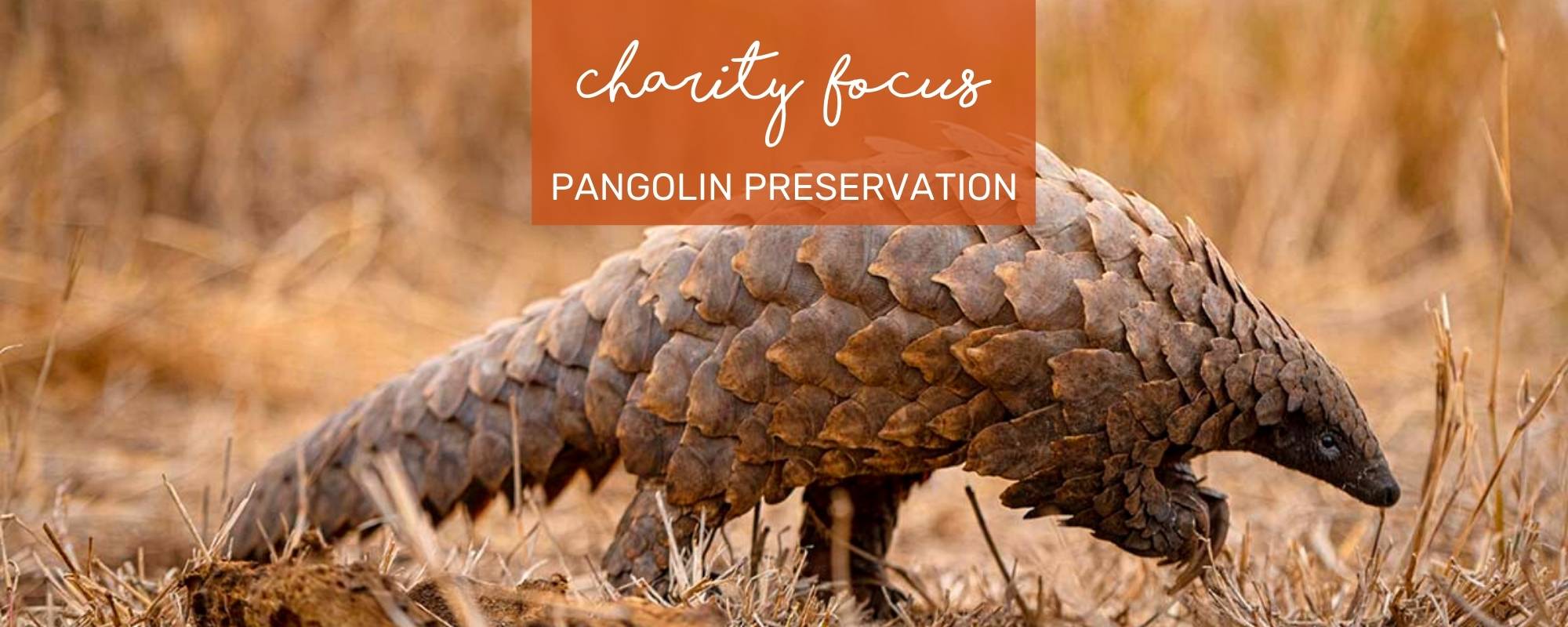
CHARITY SPOTLIGHT: PANGOLIN PRESERVATION
Posted on
Unexpected Hope for an Unknown Friend
Wild In Africa is extremely excited to present one of our newest partner charities, Pangolin Preservation, an organization that seeks to stop the illegal poaching of Temminck’s Ground Pangolins in Africa.
Pangolins are small, scaly mammals that inhabit parts of Africa and Asia and are related to anteaters.
The Pangolin Preservation organization funds anti-poaching efforts, as well as the rehabilitation of pangolins after they are rescued from poachers or illegal traffickers.
Additionally, the Pangolin Preservation charity facilitates the education of young locals on the importance of pangolin conservation. Their primary focus is the region surrounding Hoedspruit, Limpopo, a South African town near Kruger National Park: South Africa’s largest wildlife sanctuary.
Our PR Consultant, Taylor, had the chance to interview Anna Mussi, orphanage manager for Pangolin Preservation team, to learn more about the process of saving and rehabilitating these special animals.
“Keep reading for a unique insight into what the Pangolin Preservation team does to rescue and protect pangolins!”
Anna, a longtime wildlife conservationist, felt that before explaining the process of rescuing a pangolin, it was essential to understand why pangolins need to be saved. Although many may have never seen or heard of them before, Temminck’s Ground Pangolin is the most highly trafficked animal in the world.
Anna explained further that pangolins are poached for their scales, which are made of keratin. Keratin, a hard substance that also makes up human fingernails and hair, is falsely believed to have healing properties. Although Anna is aware of the inaccuracy of those beliefs, poachers in the area are more concerned about profitability than pangolins.

How can we save them before it’s too late?
Although Anna and her team would prefer pangolins to have never been poached in the first place, they know it is inevitable. In response, they partnered with local police units, who regularly raid poached pangolins from traffickers.
This partnership allowed the Pangolin Preservation organization an opportunity to rescue and rehabilitate pangolins, which is where their story truly gets interesting. Anna spoke of the way that they obtain the pangolins, and she described it as a process of preparing and waiting.
Obviously, the police force is the first step in the process. Police officers notify Anna when they are planning a raid, and from there the team prepares to take in one or multiple pangolins.
“Depending on how long they had been in the poachers’ care, some of them were severely malnourished,” said Anna. “These traffickers don’t actually know anything about these animals, so they have no idea how to feed them properly."
After an initial veterinary exam, the pangolins are cared for and tube-fed until they are able to regain enough strength to walk and forage for themselves. As nocturnal foragers, pangolins feed themselves by moving between ant and termite hills to find ample food for the evening.
When recovering pangolins are able to return to foraging, they still need to be supervised. To facilitate this process, caregivers are assigned a pangolin to walk each night.

Wait, how do you walk a pangolin?
Anna took a moment to explain that pangolins are for the most part solitary animals, and they all have their own personalities. For this reason, it’s essential for each pangolin to be able to choose their foraging patterns and food preferences for themselves.
The easiest way to do this is to simply drive into Kruger National Park with a pangolin, release it and walk behind it while it eats.

What happens next…
As Anna described the process of caring for and releasing rehabilitated pangolins, she expressed that one of the most important aspects of this process was educating the local community about the benefits of keeping pangolins alive.
“For farmers, pangolins can help to control ants that could impact soil conditions, and they also eat termites that could damage buildings,” .
Specifically, the Pangolin Preservation seeks to provide educational materials to children, who will one day be able to make important decisions to protect and benefit pangolins. Children in the area are often very enthusiastic when they’re able to see animals that are being rehabilitated.
“There are benefits that these animals can bring to the people living near them. It’s a whole different approach, but we really feel that by approaching these people, especially children, we’re able to instill a level of empathy in them.” - Anna
Since its beginning, Pangolin Preservation has led the way to preventing pangolin poaching, rehabilitating injured animals after poaching, and educating the surrounding community.
One day, the organization hopes to end pangolin poaching in its entirety, but until then, they plan to continue to fight for this very special animal.
If you’re interested in hearing more about Pangolin Preservation’s story, keep a lookout for our next update!

Pangolin Preservation Bracelet
You can also get involved and show your support to Pangolin Preservation by purchasing a Wild In Africa Pangolin Preservation bracelet.
Brown Snowflake Jasper is a beautiful chocolate brown, complemented by silver and light brown accents. These gorgeous stones are believed to promote grounding & balance, strengthen one's connection with Nature and help with focus & clarity.
50% of the purchase price is donated directly to Pangolin Preservation!


Written by Taylor Plate
Don’t miss out on future posts so be sure to sign up for our Wild Tribe (scroll below to sign up).
New products and discounts first!
RETAIL & STUDIO
The Farm House, R527
Hoedspruit LP South Africa
Whatsapp: +27 79 225 4988
contact@wildinafrica.store
. . . . . . . . .
HEAD OFFICE
65/2 Arbor Ave, Robina
QLD 4226 Australia
